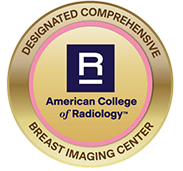Our Doctors’ response to the new American Cancer Society Screening Guidelines

On October 20, 2015 the American Cancer Society changed its screening guidelines for women at average risk for breast cancer. They now recommend that women at average risk for breast cancer begin annual screening mammograms at age 45.
The doctors of Rye Radiology Assoc., LLP are not in agreement with the new American Cancer Society’s mammography recommendations. We feel that many lives will be lost if these guidelines are followed.
Please see the following scientific data for why we will not change our recommendations that women at average risk should begin annual mammography screening at age 40.
DATA FROM THE AMERICAN COLLEGE OF RADIOLOGY (ACR)
MAMMOGRAPHY STUDY BRIEF
Why Mammography? According to National Cancer Institute data, since mammography screening became widespread in the mid-1980s, the U.S. breast cancer death rate, unchanged for the previous 50 years, has dropped well over 30 percent.
In European countries like Denmark and Sweden, where mammography screening programs are more organized, the breast cancer death rate has been cut almost in half over the last 20 years.
A study (Otto et al) published in Cancer Epidemiology, Biomarkers & Prevention shows mammography screening cuts the risk of dying from breast cancer nearly in half.
A recent study published in Cancer showed that more than 70 percent of the women who died from breast cancer in their 40’s at major Harvard teaching hospitals were among the 20 percent of women who were not being screened. The most rigorous scientific studies have shown that the most lives are saved by screening beginning at age 40.
A recent study in the British Medical Journal shows that early detection of breast cancer – as with mammography – significantly improves breast cancer survival. Mammography can detect cancer early when it’s most treatable and can be treated less invasively. This also helps preserve quality of life.
For more information regarding the proven effectiveness of regular mammography screening at reducing breast cancer deaths, please visit www.MammographySavesLives.org. Why Start Mammograms @ 40. Every major American medical organization with expertise in breast cancer care, including the American Congress of Obstetricians and Gynecologists (ACOG), American College of Radiology, and Society of Breast Imaging recommend that women start getting annual mammograms at age 40.
Screening mammography shows greatest benefit—a 39.6 percent mortality reduction—from annual screening of women 40–84 years old. This screening regimen saves 71 percent more lives than (the USPSTF-recommended regimen of) biennial screening of women 50–74 years old, which had a 23.2 percent mortality reduction. (Hendrick and Helvie)
By not getting a yearly mammogram after age 40, women increase their odds of dying from breast cancer and that treatment for any advanced cancers ultimately found will be more extensive and more expensive.
One in six breast cancers occur in women in their 40s.
The ten year risk for breast cancer in a 40 year old woman is 1 in 69 and only increases with age.
40 Percent of all the years of life saved by mammography are for women in their 40s.
Why Start Screening at Age 40?
1. Annual screening mammography starting at age 40 results in the greatest mortality reduction, the most lives saved and the most life years gained (LYG). This is why the ACR/SBI recommends regular mammography in women 40-and-older (including 40-49)
2. Breast cancer incidence increases substantially around age 40. The incidence rate for ages 40-44 is twice that for ages 35-39 (122.5 vs 59.5 per 100,000 women). For ages 45-49 it is 188.6 per 100,000 women; it continues to increase until age 80.
3. One in six breast cancers occur in women aged 40-49.
4. Forty percent of all the years of life saved by mammography are among women in their 40s.
5. The years of life lost to breast cancer are highest for women in their 40’s.
6. The largest (Hellquist et al) and longest running (Tabar et al) breast cancer screening trials in history have reconfirmed that regular mammography screening cuts breast cancer deaths by roughly a third in all women ages 40 and over (including women ages 40-49).
7. The recent Pan-Canadian Mammography Study (Coldman et al) involved over 2.7 million women screened in Canada and showed an average mortality reduction of 40%, which was the same for women 40-49 as for older age groups.
8. The U.S. Preventive Services Task Force (USPSTF) acknowledges an increase in total number of lives saved and life-years gained in women who start mammography screening in their 40’s.
9. Analysis by Hendrick and Helvie published in the American Journal of Roentgenology shows that at current mammography screening rates, annual screening starting at age 40 saves approximately 6,500 more women’s lives each year in the U.S. than the USPSTF recommendation of screening every other year starting at age 50.
10. Annual screening results in more lives saved from breast cancer than biennial screening. USPSTF scientific review now shows annual screening beginning at age 40 provides the most lives saved.
11. A study (Otto et al) published in Cancer Epidemiology, Biomarkers & Prevention shows mammography screening cuts the risk of dying from breast cancer nearly in half.
12. A recent study published in Cancer showed that more than 70 percent of the women who died from breast cancer in their 40s at major Harvard teaching hospitals were among the 20 percent of women who were not being screened. Because medical science cannot determine which cancers will advance to kill a woman and which will not, all women 40 and older should be screened annually.

